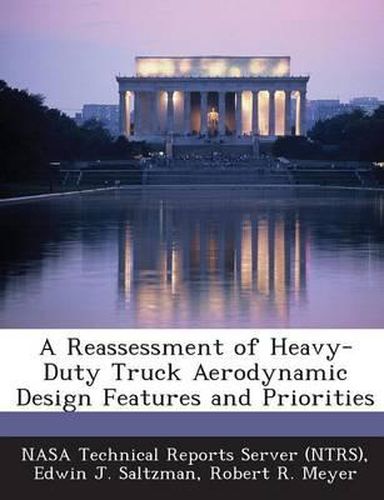Readings Newsletter
Become a Readings Member to make your shopping experience even easier.
Sign in or sign up for free!
You’re not far away from qualifying for FREE standard shipping within Australia
You’ve qualified for FREE standard shipping within Australia
The cart is loading…






Between 1973 and 1982, the NASA Dryden Flight Research Center conducted “coast-down” tests demonstrating means for reducing the drag of trucks, buses, and motor homes. Numerous configurations were evaluated using a box-shaped test van, a two-axle truck, and a tractor-semitrailer combination. Results from three configurations of the test van are of interest now in view of a trucking industry goal of a 0.25 drag coefficient for tractor-semitrailer combinations. Two test van configurations with blunt-base geometry, similar to present day trucks (one configuration has square front comers and the other has rounded front comers), quantify the base drag increase associated with reduced forebody drag. Hoemer’s equations predict this trend; however, test van results, reinforced by large-scale air vehicle data, indicate that Hoemer’s formula greatly underestimates this dependence of base drag on forebody efficiency. The demonstrated increase in base drag associated with forebody refinement indicates that the goal of a 0.25 drag coefficient will not be achieved without also reducing afterbody drag. A third configuration of the test van had a truncated boattail to reduce afterbody drag and achieved a drag coefficient of 0.242. These results are included here and references are identified for other means of reducing afterbody drag.
$9.00 standard shipping within Australia
FREE standard shipping within Australia for orders over $100.00
Express & International shipping calculated at checkout
Between 1973 and 1982, the NASA Dryden Flight Research Center conducted “coast-down” tests demonstrating means for reducing the drag of trucks, buses, and motor homes. Numerous configurations were evaluated using a box-shaped test van, a two-axle truck, and a tractor-semitrailer combination. Results from three configurations of the test van are of interest now in view of a trucking industry goal of a 0.25 drag coefficient for tractor-semitrailer combinations. Two test van configurations with blunt-base geometry, similar to present day trucks (one configuration has square front comers and the other has rounded front comers), quantify the base drag increase associated with reduced forebody drag. Hoemer’s equations predict this trend; however, test van results, reinforced by large-scale air vehicle data, indicate that Hoemer’s formula greatly underestimates this dependence of base drag on forebody efficiency. The demonstrated increase in base drag associated with forebody refinement indicates that the goal of a 0.25 drag coefficient will not be achieved without also reducing afterbody drag. A third configuration of the test van had a truncated boattail to reduce afterbody drag and achieved a drag coefficient of 0.242. These results are included here and references are identified for other means of reducing afterbody drag.